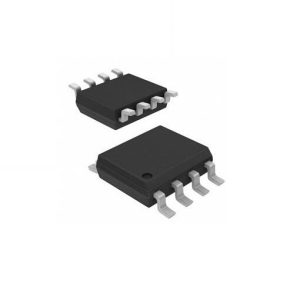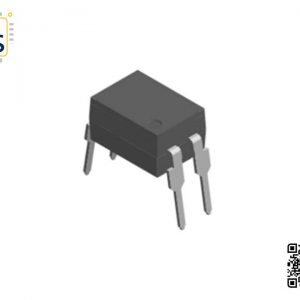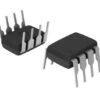AS358P-E1 Op-Amp
Consist of two independent, high gain and internally frequency compensated operational amplifiers, they are specifically designed to operate from a single power supply
14 in stock

14 in stock
The AS358P-E1 Op-Amp consists of two independent, high gain and internally frequency compensated operational amplifiers. They are specifically designed to operate from a single power supply. Operation from a split power supply is also possible, and the low power supply current drain is independent of the magnitude of the power supply voltages. Typical applications include transducer amplifiers, DC gain blocks and most conventional operational amplifier circuits. The AS358P-E1 Op-Amp series are compatible with industry-standard 358. AS358A has a more stringent input offset voltage than AS358.
Features
- Internally Frequency Compensated for Unity Gain
- Large Voltage Gain: 100dB (Typical)
- Low Input Bias Current: 20nA (Typical)
- Low Input Offset Voltage: 2mV (Typical)
- Low Supply Current: 0.5mA (Typical)
- Wide Power Supply Voltage:
- Single Supply: 3V to 36V
- Dual Supplies: ± 1.5V to ± 18V
- Input Common-Mode Voltage Range Includes Ground
- Large Output Voltage Swing: 0V to VCC -1.5V
An operational amplifier (often op-amp or opamp) is a DC-coupled high-gain electronic voltage amplifier with a differential input and a single-ended output. In this configuration, an op-amp produces an output potential (relative to circuit ground) typically 100,000 times larger than the potential difference between its input terminals. Operational amplifiers had their origins in analogue computers, they were used to perform mathematical operations in linear, non-linear, and frequency-dependent circuits.
The popularity of the op-amp as a building block in analogue circuits is due to its versatility. Using negative feedback, the characteristics of an op-amp circuit, its gain, input and output impedance, bandwidth etc., are determined by external components and have little dependence on temperature coefficients or engineering tolerance in the op-amp itself.
Op-amps are used widely in electronic devices today, including various consumer, industrial, and scientific devices. Many standard IC op-amps cost only a few cents; however, some integrated or hybrid operational amplifiers with special performance specifications may cost over US$100 in small quantities. Op-amps may be packaged as components or used as elements of more complex integrated circuits.
The op-amp is one type of differential amplifier. Other types of differential amplifier include the fully differential amplifier (similar to the op-amp, but with two outputs), the instrumentation amplifier (usually built from three op-amps), the isolation amplifier (similar to the instrumentation amplifier, but with tolerance to common-mode voltages that would destroy an ordinary op-amp), and negative-feedback amplifier (usually built from one or more op-amps and a resistive feedback network).
Historical timeline
1941: A vacuum tube op-amp. An op-amp, defined as a general-purpose, DC-coupled, high gain, inverting feedback amplifier, is first found in U.S. Patent 2,401,779 “Summing Amplifier” filed by Karl D. Swartzel Jr. of Bell Labs in 1941. This design used three vacuum tubes to achieve a gain of 90 dB and operated on voltage rails of ±350 V. It had a single inverting input rather than differential inverting and non-inverting inputs are common in today’s op-amps. Throughout World War II, Swartzel’s design proved its value by being liberally used in the M9 artillery director designed at Bell Labs. This artillery director worked with the SCR584 radar system to achieve extraordinary hit rates (near 90%) that would not have been possible otherwise.
Development Resources: demo codes, schematics, datasheets, etc
How to tutorial LM358 op-amp non-inverting comparator single supply circuit electronics
Notes:
1. There may be slight size deviations due to manual measurement, different measuring methods and tools.
2. The picture may not reflect the actual colour of the item because of different photographing light, angle and display monitor.
Other Related Products
Solderless Breadboard – 3220 Tie Point (ZY-208)
| Weight | 0.005 kg |
|---|---|
| Dimensions | 1 × 0.72 × .85 cm |
Product Applications
Current Product Support
| SKU | Product | Type | Download/View |
|---|---|---|---|
| TS-C016 | AS358P-E1 Op-Amp - AS358P-E1 | Datasheet | Download |












